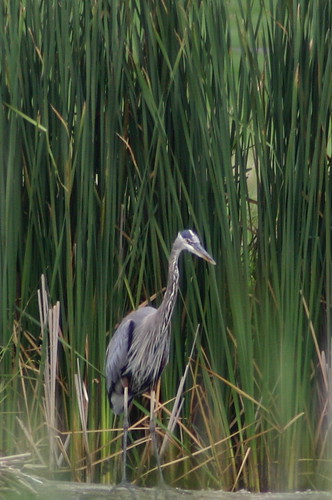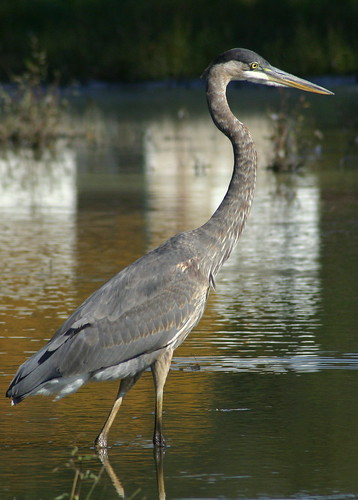Now, this was my first real use of my new lens, and I'm still learning the basics of photography to begin with. Also, most of my good pictures so far have been of .. flowers. Because they're pretty, and they don't move too much.
Birds are also pretty, but damn do they move around.
You know all those sayings about how mistakes are really lessons? I learned a lot of lessons. Took a lot of pictures. Only a few of them are good. But I learned a lot of lessons.
Lessons Learned: Day 1
- It's true that a zoom lens is hard to keep steady for your picture. A tripod, however, is not an option. I learned this over and over again when things happened and I couldn't get my camera around in time. Folding up some of the legs to make it a monopod was great, I wish I had been doing that from the beginning.
- A zoom lens has a really narrow focus field. And so, you should always take at least 3 pictures of a great subject, and adjust the focus a little each time (a little too near, what you think is right, and a little too far). That way you increase your chances of one being right.
- It's fairly easy to get close to geese (although they slowly swim away from you), but it's really hard to get close to this guy:

- I learned how to recognize (via the sounds they are making) that a group of geese is about to take off from the water. This is crucial if you want to be ready to take a picture of them taking off.
- I also learned to recognize the call of a sandhill crane. This happened when three of them flew literally ten feet above my head and I was not ready for them. Perfect shot missed.
- It pays to hide. Perhaps I need to invest in some more camouflaged, or at least earth-toned, clothing.
- Try not to get fuzzy vegetation in the foreground. You may be zoomed all the way to 300, but you still need to know what's right in front of you. You can only crop out so much.
- Ultimately, I'll need an even bigger zoom lens.
- A zoom lens is not for taking landscapes with. You cannot get a big enough focal plane.
See all my pictures from day one here.
Lessons Learned: Day 2
So, having learned many things (and more than I listed) on the first day, I returned again this morning in better light and better conditions.
- Go on a weekday morning. Nobody else is in the park to scare the animals, the lighting is better, and most of the birds are busy eating, so they don't care as much if you're there.
- Stalk slowly. Basically, you are playing a game of red-light-green-light. If they look away, feel free to run to a new spot, quietly. You will be rewarded:

- Walk softly. I was clomping my way along to the next spot I was going to take photos from when I saw three turtles slip into the water after I startled them. I could have had some great photographs of them if I had been walking more quietly and paying more attention to my surroundings.
- When sneaking up on an animal, don't keep yourself below the brush line and then suddenly appear right next to it. I got close, but if anyone was in the park this morning and wondered why about a hundred birds suddenly took off from the shoreline and went out to the middle of the lake: that was my fault.
- Sandhill cranes really don't want to be photographed.
- I need a bird identification book. And some binoculars.
I had a lot of fun, and I'm going to keep trying. I'll probably need to pick up some more supplies and check out some books from the library for pointers. If I get some really good shots, or learn some really good lessons, I'll let you know here.